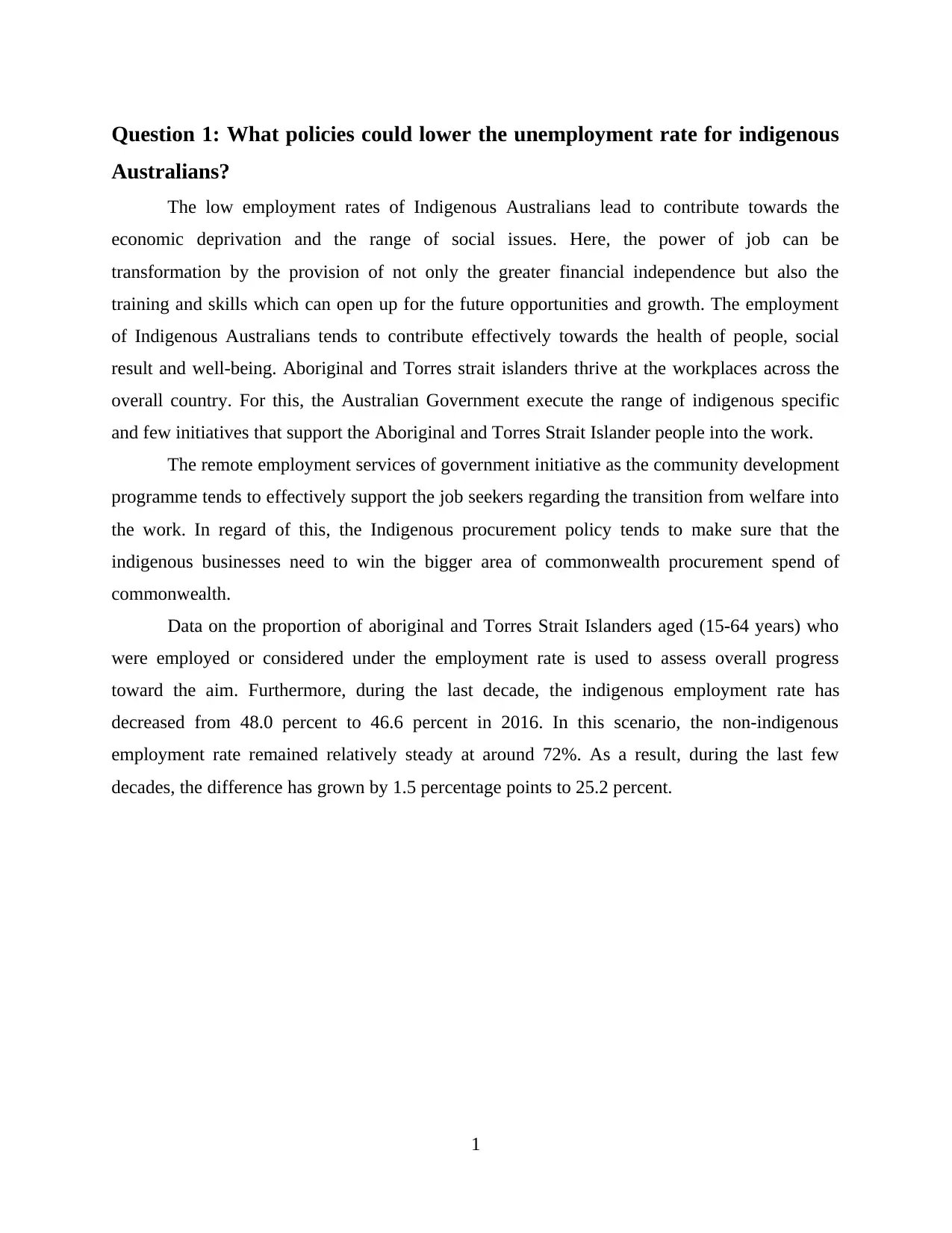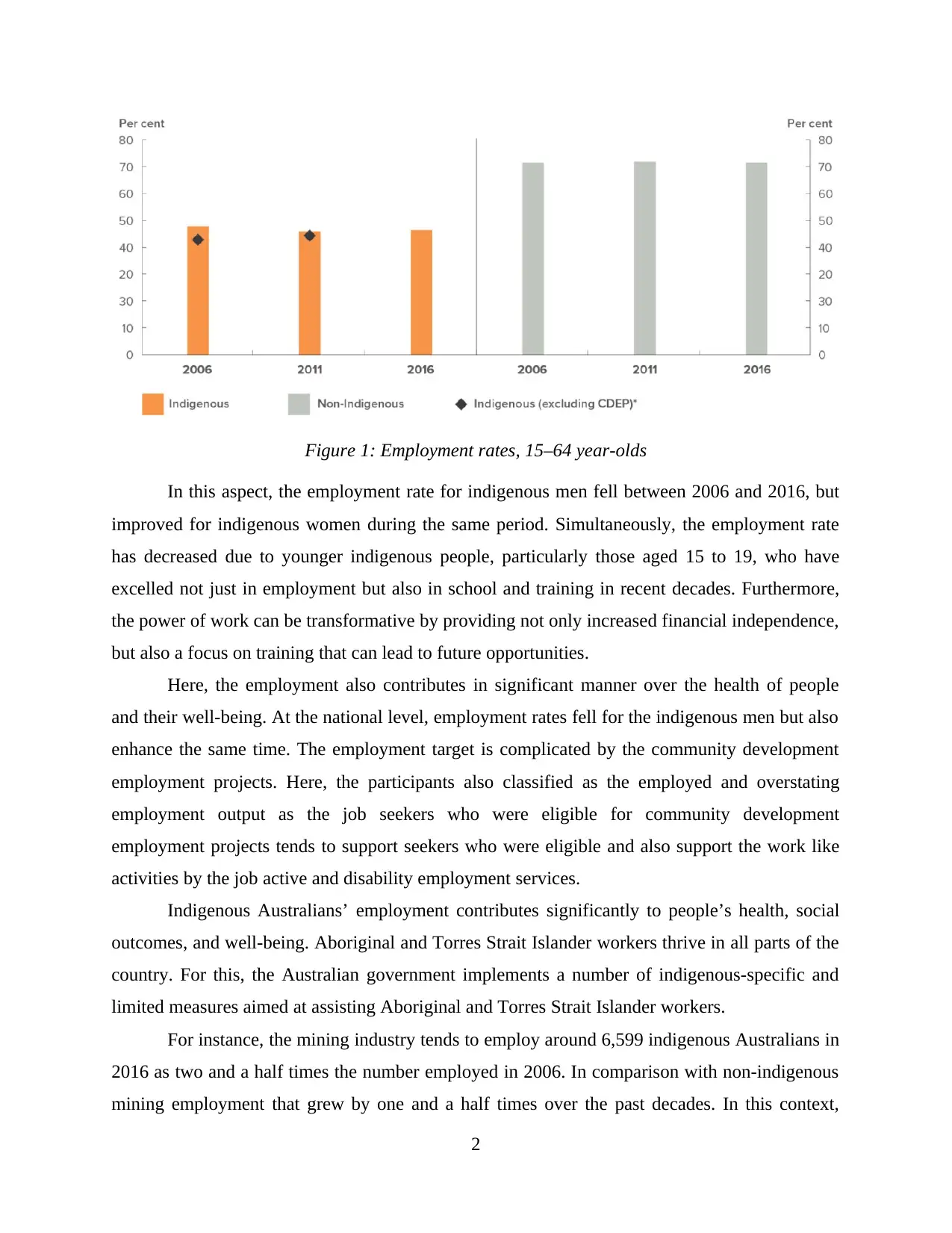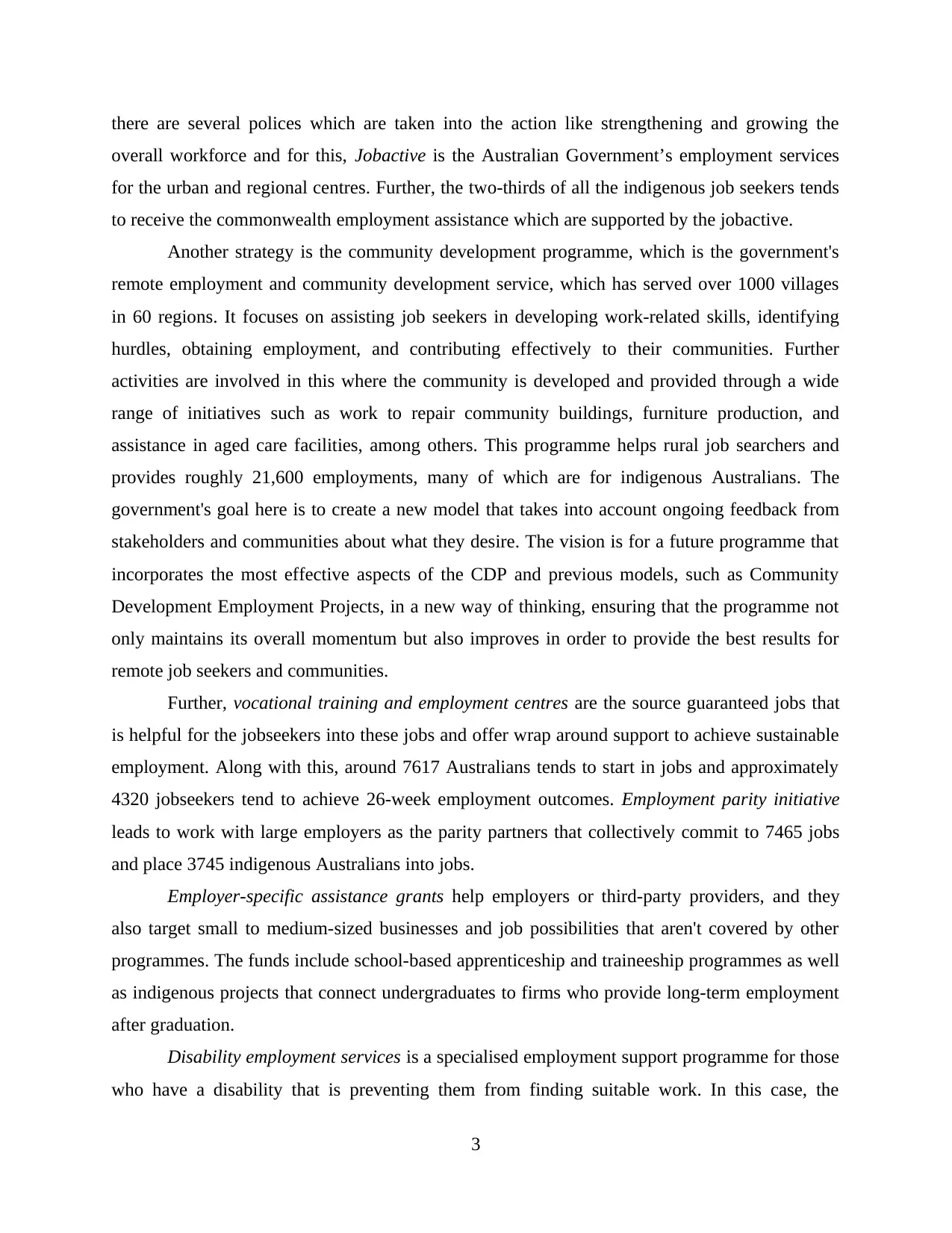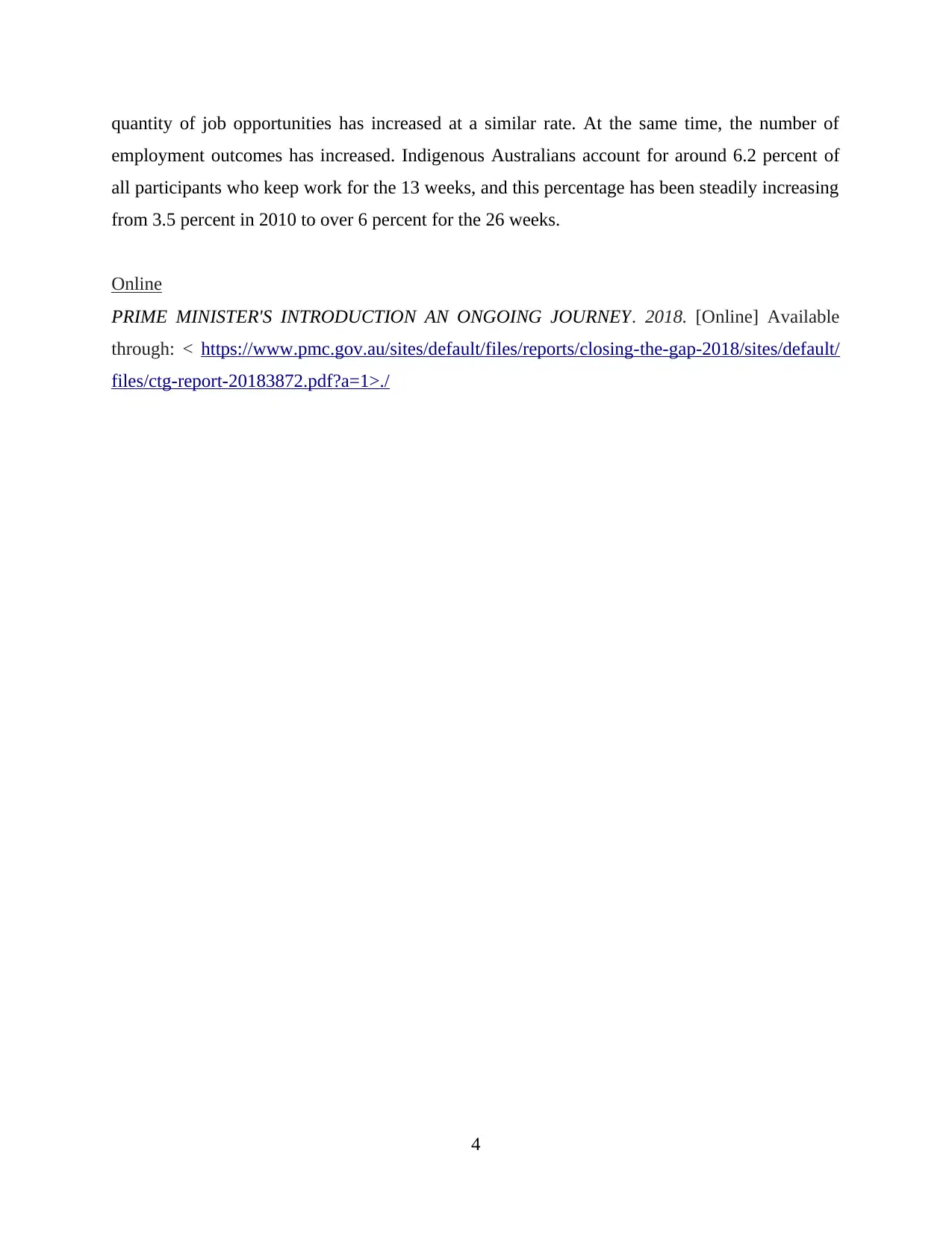Policies to Lower Unemployment Rate for Indigenous Australians
VerifiedAdded on 2023/06/18
|4
|1106
|59
AI Summary
The low employment rates of Indigenous Australians lead to contribute towards the economic deprivation and the range of social issues. Here, the power of job can be transformation by the provision of not only the greater financial independence but also the training and skills which can open up for the future opportunities and growth. The employment of Indigenous Australians tends to contribute effectively towards the health of people, social result and well-being. Aboriginal and Torres strait islanders thrive at the workplaces across the overall country. For this, the Australian Government execute the range of indigenous specific and few initiatives that support the Aboriginal and Torres Strait Islander people into the work.
Contribute Materials
Your contribution can guide someone’s learning journey. Share your
documents today.
1 out of 4










![[object Object]](/_next/static/media/star-bottom.7253800d.svg)